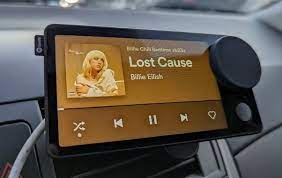Why Spotify’s Car Thing Failed to Sell

Spotify’s recent foray into hardware with the “Car Thing” has not been a success, with reports suggesting that the company has now discontinued the device. But why did the Car Thing fail to catch on with consumers?
At its core, the Car Thing was an attempt by Spotify to extend its reach beyond smartphones and smart speakers, and into the car. The device connected to a car’s audio system and allowed users to control their Spotify playlists via voice commands or a touchscreen interface. While the concept may have seemed promising, there were several factors that likely contributed to the Car Thing’s lackluster performance in the market.
Firstly, and perhaps most significantly, the Car Thing faced stiff competition from existing audio systems that are already built into many cars. These systems often offer similar features to the Car Thing, such as voice control and Bluetooth connectivity, and are integrated directly into the car’s dashboard. As a result, many consumers may have seen little need for a separate device specifically for Spotify when they already had an audio system that could do the same thing.
Secondly, the Car Thing was only available to a limited number of Spotify subscribers, with the company offering it exclusively to select users in the US. This meant that many customers were unable to access the device, limiting its potential market.
Another potential issue is that the Car Thing may have been seen as unnecessary. While many people enjoy listening to music in the car, the need for a separate device to access Spotify while driving may not have seemed compelling to many consumers. Furthermore, some users may have already been satisfied with using their smartphones to control their music in the car.
Lastly, the Car Thing was somewhat expensive, costing $80 for the device and an additional $6.99 per month for premium Spotify subscribers. Given that many consumers already have existing audio systems in their cars, the price may have been seen as prohibitive for what was essentially a supplementary device.





